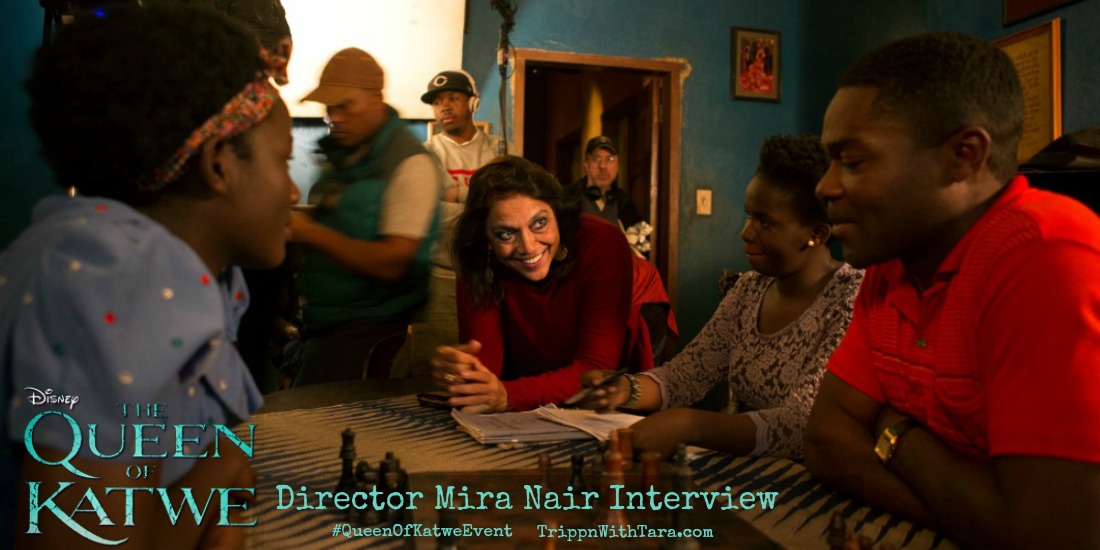
When women take advantage of their power for the better in the world of Hollywood, I can’t help but fall in love. Take Director Mira Nair for example. She found a story of a young girl living in Kampala that inspired her to take on Disney’s latest feel-good film, Queen of Katwe. Starring Academy Award Winner Lupita Nyong’o, David Oyelowo and newcomers Madina Nalwanga (Phiona Mutesi) and Martin Kabanza (Phiona’s brother Brian Mugabi), Mira brings to life a story that you will want your whole family to see.
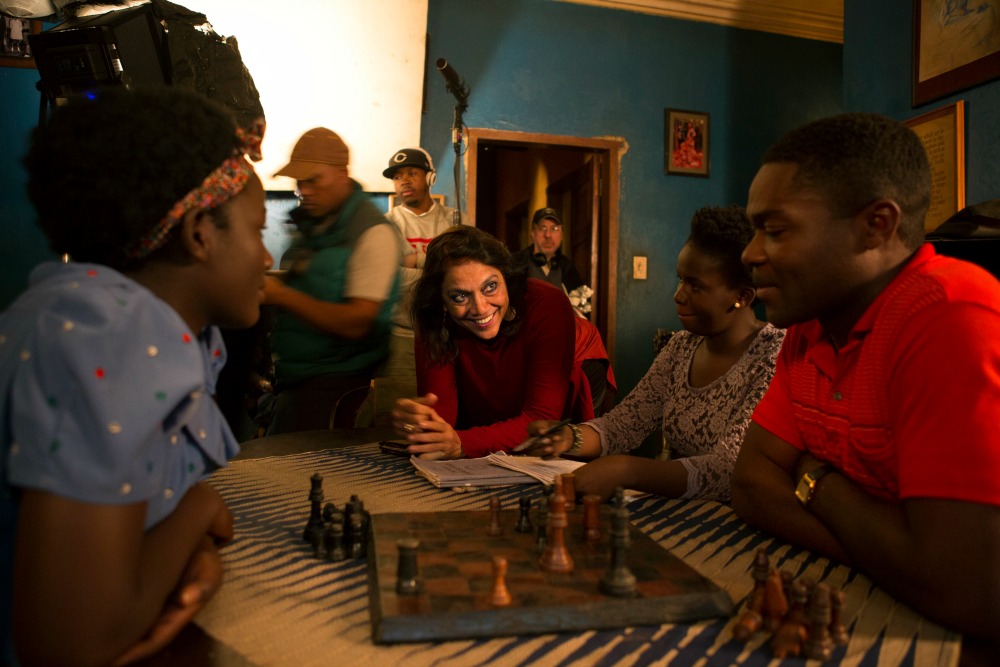
Director Mira Nair
The story of Phiona is so inspirational; it’s easy to understand why you would want to take on this project. Can you tell us a little how you became involved?
Yeah. I’ve been living in Kampala now 27 years, ever since I made “Mississippi Masala” there in 1989. I fell in love, had a son and planted gardens and created a film school called Maisha. The slogan of Maisha is if we don’t tell our stories, no one else will.
Oh, I love that!
There are so few images of Africa on any screen anywhere, and when there are, it’s usually death, despair, dictators, and bestiality. We created the school because we have to make the dignity and the joy of everyday life in our street in Kampala. Be specific. Be local. Be truthful. And be excellent. It was such irony that despite the stories in my surroundings for 12 years – and we have 680 alumni students now including several directors we have created from East Africa – and this story of Phiona Mutesi, who lived 15 minutes from home. How did I not know about her?
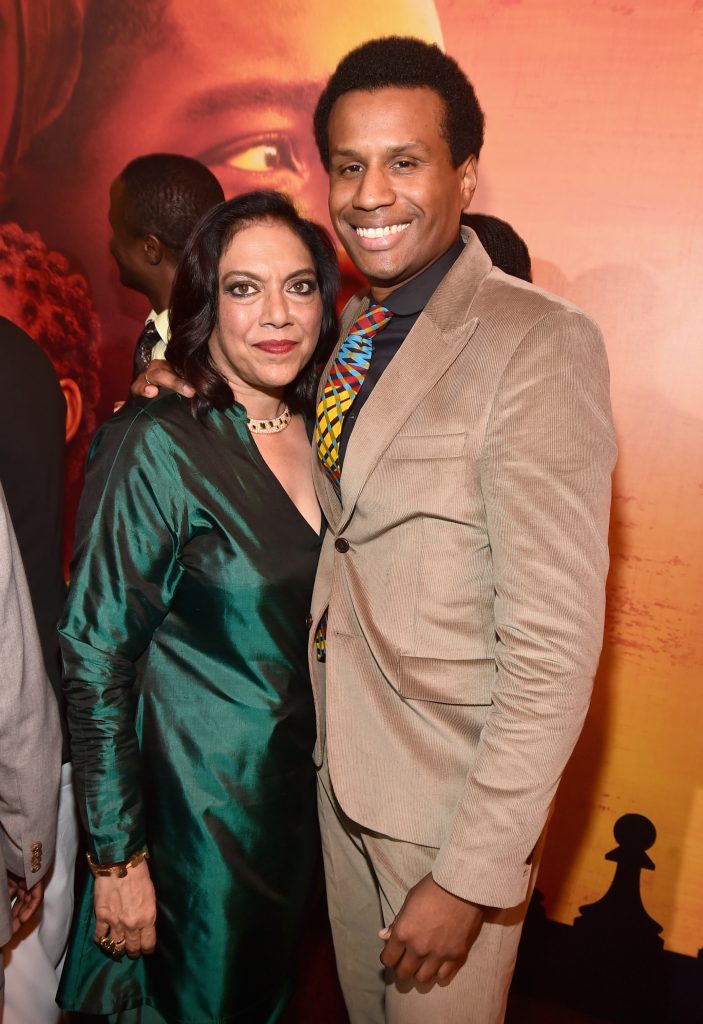
I found out about her from Tendo Nagenda, a Ugandan that is also the Executive VP of Disney productions. He came to see me in my garden in Kampala when he was at a family reunion about four years ago. He showed me this little article about Phiona in the ESPN journal about this child who sold corn in Katwe, who now was heading to becoming a chess prodigy and going to the Olympics in Russia. How can you not be struck by the story? That is what I live around so I said I’d love to meet Phiona first. I met her funnily enough in New York City where I live half the time. Phiona was playing chess in New York, so I met her there and Robert Katende. We had such a lovely connection instantly. Since we are Ugandan, we were joking, slanging, everything. I got to know them well. Then I asked to meet Harriet. I spent a lot of time with Harriet. She took me just below where I lived; this was the place of the eviction when her husband died. We spent the day just going from one location to another where she had been with her four kids, at abandoned church, the veranda of a little vendor stand, a shop somewhere, and finally a small room. I mean when I saw the trajectory of actually the struggle, the homelessness, and her fierceness to keep her family together against absolutely every odds there was, it just was so deeply moving, yet great for she was full of courage and full of pragmatism. She was not a defeated woman by any means.
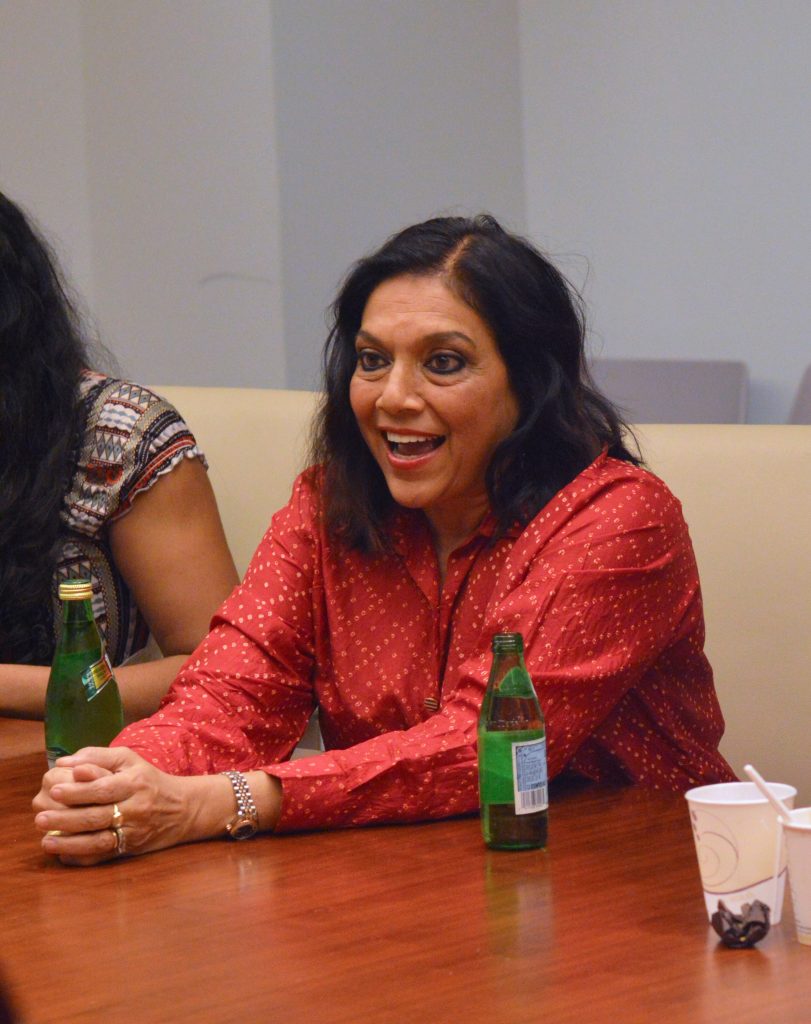
Then there’s another story worth telling. I have this schooI and have a dinner for all the students who come to my school once a year. I invited Harriet and Phiona and everyone that day. So they came into my home, and you forget when you live in a home with a garden and whatever. You think people have seen a home with a garden, but not Harriet. She had never been in a home with a garden. I’m a real gardener. I have a nursery. I create my own plants. I create my tree nurseries, everything. She looked at the garden very quietly, and I said, “I would love to come and plant your garden.” She just looked very quiet, and she looked everywhere, and she said, “it is because I have seen your garden that I will allow you to plant mine. It was great because she’s so dignified and not like thank you so much. Nothing. The next day, in my pickup truck I put 80 plants, and drove out to her home and planted the garden over the course of a day. Then someone gifted her a smartphone. And every time a flower blooms she sends me a picture! That’s what I get because she doesn’t speak English. She speaks Ugandan. She clicks the flower and sends it to me. So, I have this sort of love connection with Harriet, which is without words but just to do with trees, ever since.
Can you talk about some of the challenges you faced filming in Uganda and making chess compelling to watch?
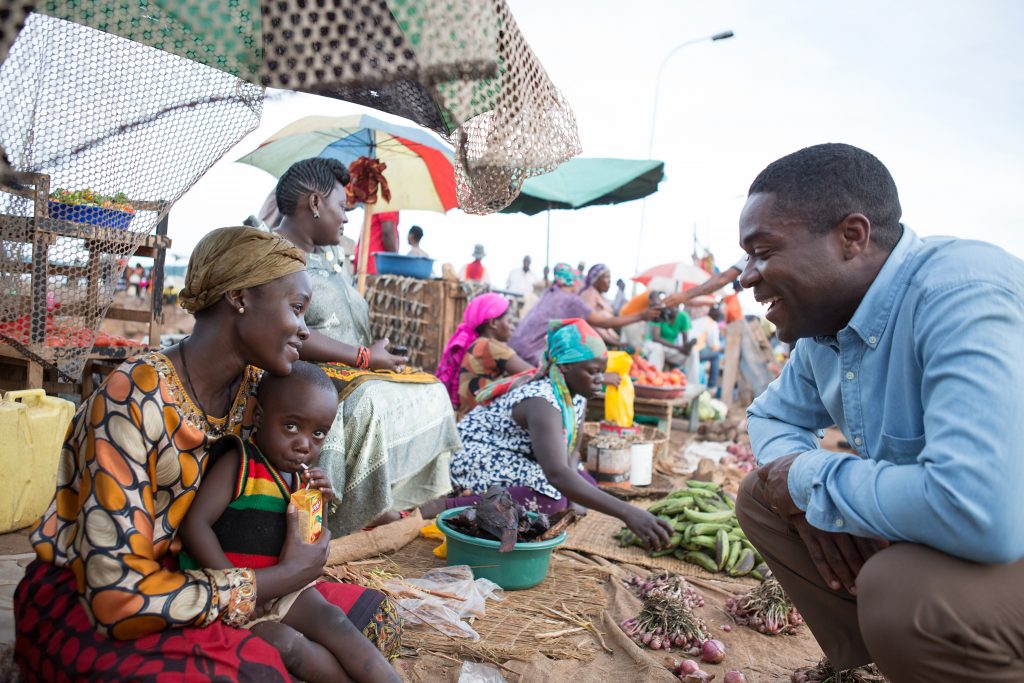
The most beautiful challenge was to share the love and familiarity I have with my home, my adopted home of Uganda. The people, the sassiness, the vibrancy, the style. Kampala is the center of used clothing in the world to give you an example. There’s that market called Owino where Lupita goes as Harriet to sell her mother’s dress. That is the market. That’s how my fish seller gives me fish every second day. I wanted to capture that sort of emphasis of like no matter what we don’t have; we will put forward something that is excellent. So the great challenge was to capture that sense of somebody who embraces life fully and doesn’t complain about what you don’t have. If you have half an inch of water, you will wash your hair, and no one will know that you had a struggle.
This the quality of what I live around and this is the quality that I hoped to capture. Of course, Phiona, in her real remarkable and utterly true story, gives us so much of that because the other thing I wanted to capture is that you cannot do it alone. You have to have the fire in you, but it takes a village. It takes a teacher to see your talent. It takes a mother to shepherd you, whether it is a right shepherding or not, she wants to protect her children from disappointment. She says there is no point to having dreams because you will be disappointed. Phiona proves to her mother quietly and steadily that it is possible with a teacher, with a community, with a street like this, with a family like this, it is possible to achieve what you dream of, and that is the beauty of life there. That is what I wanted to achieve. It’s not just one girl’s story, but what I call the prismatic story, the story of the whole street, the story of the family, the story of the mother and the complexity of every character.
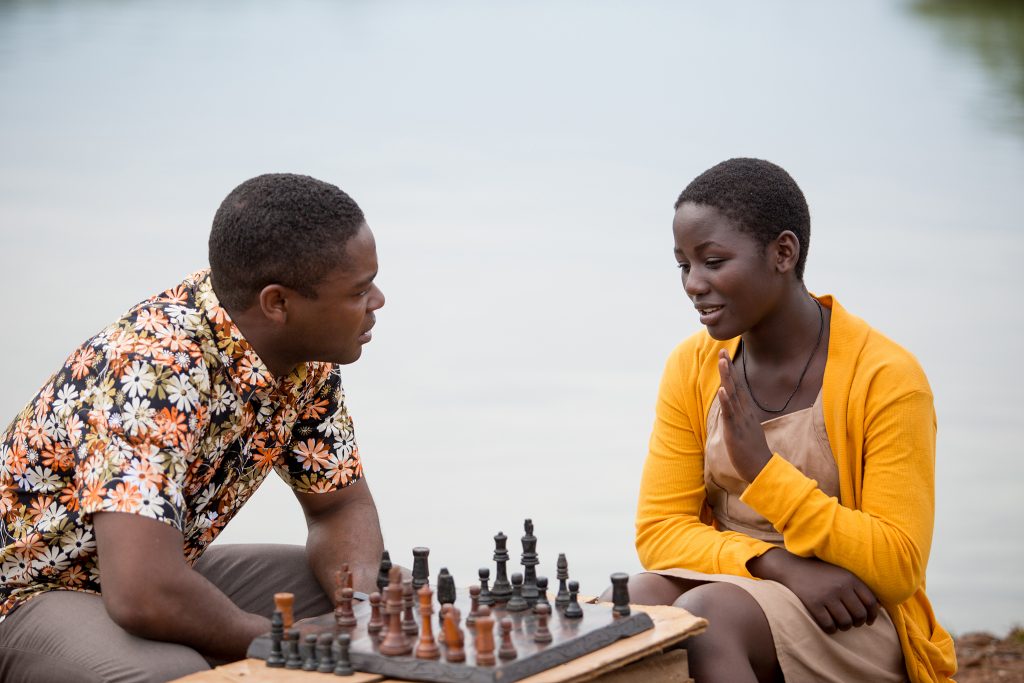
So that was the challenge. The other sweet challenge was filming chess. It’s really a challenge to film chess, because it’s a highly intellectual game. It’s about strategizing and making moves and how can I as a visual filmmaker make chess interesting? They were real games and real moves that Phiona was famous for. It wasn’t a made-up situation. Sean Bobbitt, our cinematographer, and I looked at every game as a unique visual challenge. We filmed every game differently from the other. That was a challenge because there’s only so many things you can do with the chess board. How to create chess so that it can be emotional, dramatic, and propulsive, propel the story forward and yet not bore you to death and yet be satisfying the chess aficionados.
Fantastic job.
That was a sweet challenge.
What was your knowledge of chess before this project?
I was the mother of a competitive chess player. My son played competitive chess when he was eight, and we would travel to all kinds of places. So I was part of the chess circle, but I didn’t know chess well. I understood it, but I didn’t play it. The real Phiona taught me chess before the shooting. And she would just laugh at me because I was reckless and I would; I would just move the piece. And she would say, “ahhh, Mira, you must consider the other side of the board.” I would just write down the things she said. I said that’s a great line, Phiona. I love that like so much with “the other side of the board.” It’s like a metaphor for the world. You know, if we all considered the other side of the world it would make life work. So, I used to write down what she would say, and it comes out of her mouth in the movie if you notice it. She would say, “are you focusing on the game or on your film?” I said the film. (laughing) And I love that she, as a teacher, she was fantastic.
The costume design is beautiful. It brings Uganda to life. Can you talk a little of the styles chosen for the film?
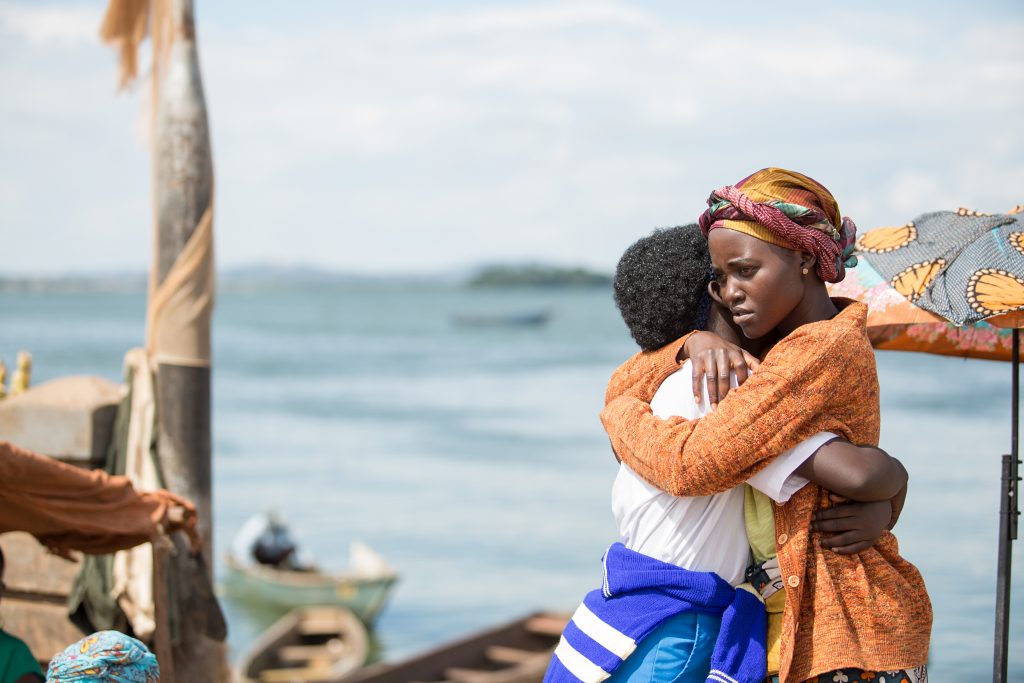
The vibrancy of the style is something I have loved as I live there. It’s about really having a sense of smartness. We worked with a great costume designer, Mobolaji Dawodu. He made this ravishing film called Mother of George. I had seen his work, and it was a Nigerian family in Brooklyn. And the way he styled our African clothing like kitenge in a vividly patterned fabric. I was saying to Mobolaji Dawodu; it’s this juxtaposition. My fish seller was wearing a genuine dress with the kitenge wrap on it. SoLupita’s clothing is not like made ’cause she’s a movie star or anything. This is how it is there, because all our clothing, the costumes in our film, all came from Owino, the real second-hand market. We did not need a big budget for this. Even though everyone dresses very vividly, it is really how people are. And we went into the second-hand markets for all of it.
Let’s talk about casting. I mean, David (Oyelowo) and Lupita are an easy understanding, but those kids!
I always work a lot with non-actors, people who have never faced the camera before, opposite legends like Denzel Washington, or in this case Lupita and David. That is what I think is the alchemy between the sort of purity and lack of artifice of a child actor, of a child really, not even an actor opposite a legend who has a lot of tricks to their trade. All those tricks kinda have to drop off when you’re faced with the purity and kinda freshness of a kid, especially a kid who comes from the same streets as the story that you’re filming. So, for me, it was always critical that we don’t go too far afield to find our children. All our kids came from Katwe or Chibuli which is the neighboring community right across the street from Katwe. All our children have come from there and do live there.
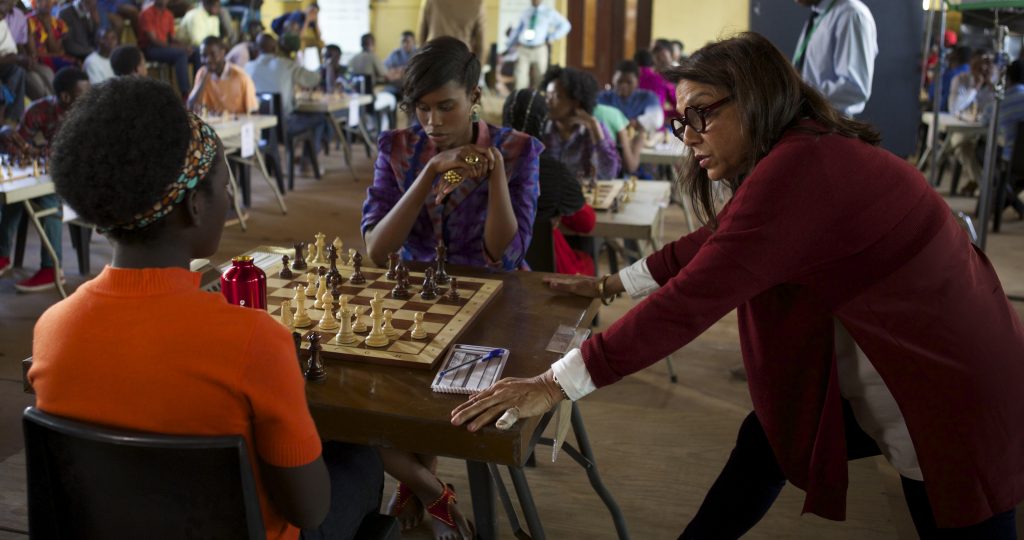
For Phiona I saw 700 girls from July, like six months before the shooting, mostly in Uganda but also in Kampala, Kenya, and England. I was sure that we would find her in Uganda, but it was tough because this is the role that carries the whole film. One girl, the one that plays the Kenya champion, she was the finalist of Phiona. But to be honest, I was not in love, and I only trust love. I trust my instinct. I have to love you, because I have to live with forever, exactly. And I would have to want to be with you. You cannot have hesitation on casting. It’s the core really in several ways. So six months after seeing so many girls, my very close friend, casting director Dinaz Stafford, and my son who was her associate went on the streets on the Chibuli. Like in Katwe, to a little dance company where young kids learn traditionally Ugandan dancing to perform in hotels on Sunday nights for tourists. They went into this rehearsal, and they filmed Madina sweating and smiling.
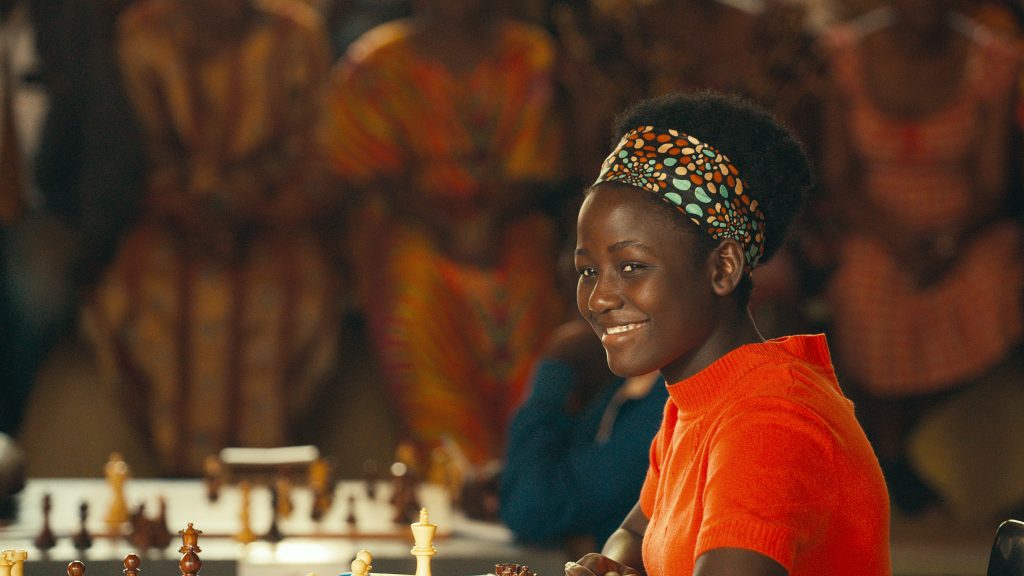
They came home said, “Mama, I have somebody, another possible Phiona.” And I just kinda rolled my eyes and thought, oh, my God, seven hundred and one. And then they showed me the film, and she was magnetic. But I still put her through the ringer for like three weeks of testing and learning to play chess. Even though the speak English in Uganda, Luganda is the mother tongue. Can she think in English? Can she emote in English? The thing is she was a dancer and is a great dancer. So, since the age of four, she has a remarkably similar life to Phiona where chess was Phiona’s way out. Dance is Madina’s way. But dance has given her this great balletic grace over hair body and control over her body, which is a beautiful thing to have as a film actor, because you have to go for a kind of stillness sometimes, and I found the physicality stunning. She just owned it, and she’s extraordinary.
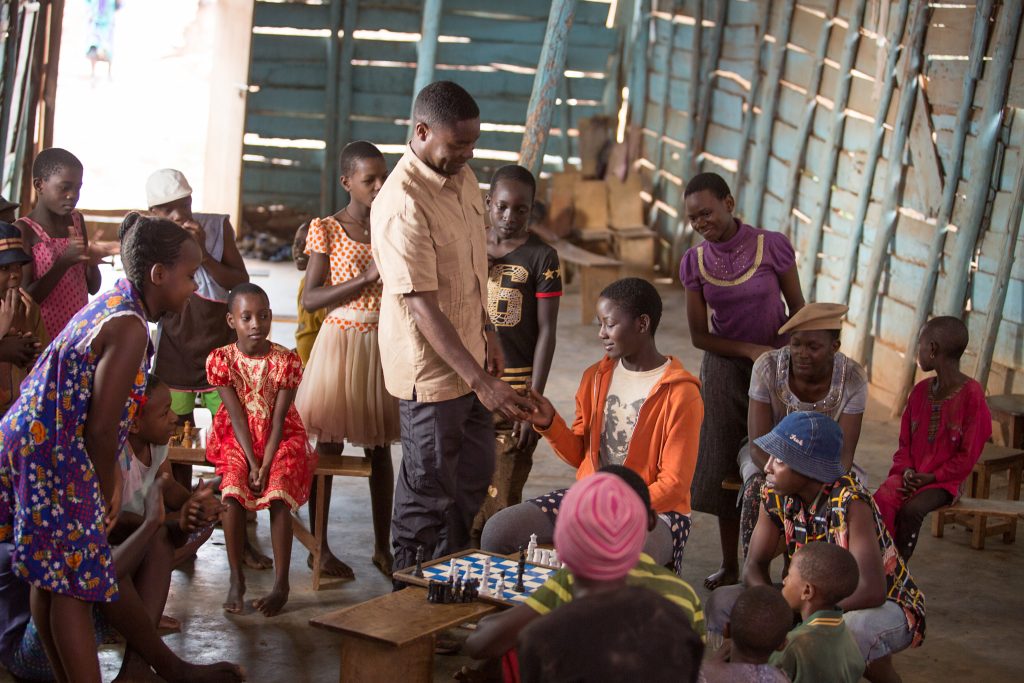
Four kids came from that dance company. A lot of the boys came from there, too. Brian, who plays her brother was in a football club like literally outside the gates where I live. There was a local football club, and his coach brought Brian in, and I just loved his performance, his sense of comedy. All were either open casting calls on the streets or in the national theater. All the kids are from that area. And then it was two months of workshops, dance and debate in all kinds of ways. And I kept seeing who does what interestingly. Like, all this comes from the kids. You know, like Benjamin, who has the lollipop and I just loved it. They make a lot of great sounds, like “ahhh eeeeeh iiiish.” It’s like this. We talk like this. Beautiful. Or that snap.
The snap is such a great example. It was like checkmate. One time somebody even tapped me and said, Mira, I think you’re going for too many snaps. And I said, no, you wait. And it’d be the catchiest thing. ‘Cause I’m a shameless populist. I like to put, you know, bums on seats. I like to entertain you. This is the spirit of our people. And I’ve seen now these screenings. People are just like can you do it?
How do you feel filming in Uganda sharing the people and the positive has impacted them?
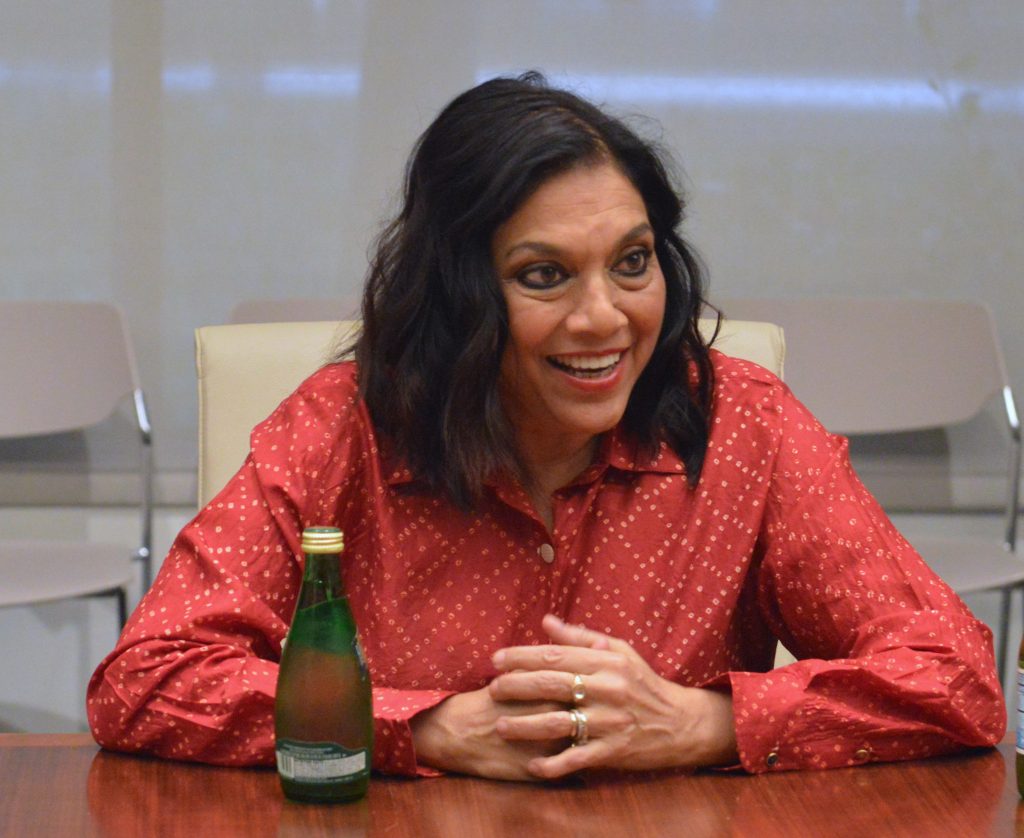
We were waiting with our eyes for sure. One is because it is my home. That is where I live. I’m not gonna run away. So we have been doing several things. One is we ran a green set, an ecological set, which is unheard of there because plastic is so awful. So we turned everything into a recycled sort of heaven. We also worked with the community of Katwe. We called it the Legacy Project while we were shooting, which is all shot in Katwe and the real places and a way to ask what the community needed. And it was decided with the elders of the community that toilets, public toilets were the big thing. So, we have a project with Disney to build a whole series of public toilets in Katwe, just a small example. But then recently they had purchased a building in Katwe to house permanently the Chess Academy, which has just gone through. And then we have an educational fund for all the pioneers in the film, to go to the university is the idea. And that’s a very complicated and very excellent endeavor, because, like in the film, like in life, education is the cornerstone. And in Kampala, it’s a big emphasis. People knock on your door every day for school fees, because whatever it is you must go to school. So, the education for our kids is vital.
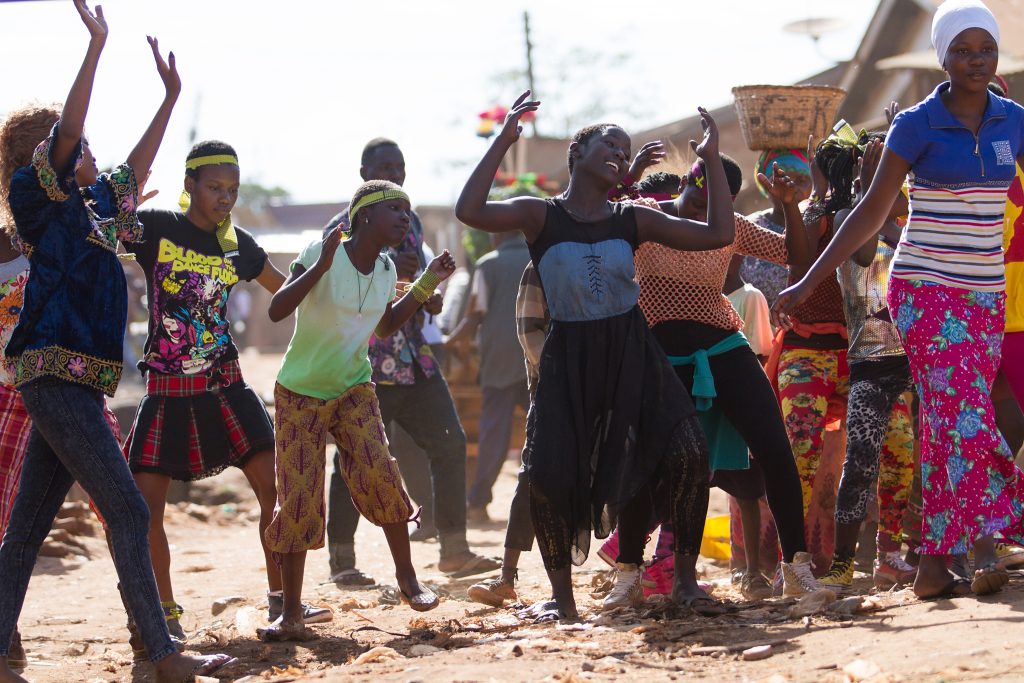
And lastly in our film school, Maisha, which is now a school for the community, we are building the last phase of the school, hopefully with Disney’s help, which creates an open-air community theater and audio-visual library, because that is what is not there. I mean there are no libraries. There are no books. There’s certainly no visual. So that is what I’m appealing for because it is impossible for us to have done this thing and made this film and not care about what happens in the future because the whole film is as much as it is about the present, it is about the future of our kids.
Queen of Katwe is now open in U.S. theaters in limited release today expanding nationwide September 30, 2016.
Facebook | Twitter.com (#QueenOfKatweEvent) | Instagram | Website
*I was invited by Disney to experience the Queen of Katwe press event to share my experience. All opinions are my own.
- You Have to Remember – 9/11, 20 Years Later - September 11, 2021
- Creating the Perfect Look with a Maxi Dress - October 20, 2020
- Brand Better Giveaway - October 6, 2020


Leave a Reply